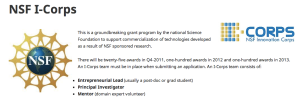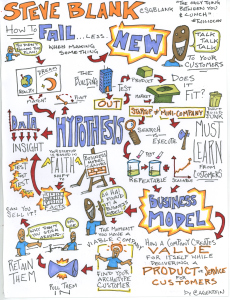In some discussions with an esteemed entrepreneurship researcher, I wondered what we are missing as analysts, researchers, educators, citizens, economic beings in today’s US? After some reflection, we began to discuss whether the drive to find, support and exploit innovation (the Schumpterian type) we had overlooked/missed the importance of small business? Traditional, local, stable small business? Had our global, consumer, and technological marvels drawn us away the humble, democratic supporting small business operators? (Reminder: I am reading David Potter’s People of Plenty).
I had begun thinking about this during Spring 2017 when I taught an undergraduate course in Small Business. Beyond accounting, finance, marketing — this course included a focus on family business, franchising, legacy (generational time horizons) and some other small business specific issues — topics that innovators, startup weekend participants, hackers, and sharks — pushing to disrupt the world — don’t generally talk or think about. Much of it was refreshing and more substantive and tangible when compared to our lean wielding, customer interviewing founders.
The reality is, many of the students we teach in class and work with in our extra and co curricular programs — competitions, accelerators — are building small ventures.
We also see a trend towards students working with their hands — from 3D printing and electronics to sewing and graphic design. These great new opportunities, evidenced by makerspaces and labs of all sorts, dovetail well with my epiphany on the importance and role of small business.
The Christian Science Monitor has a really interesting piece on manual labor being a hot new job for middle class students. My own foray into mechanical typewriters and work with a variety of founders highlights the shortage (and now high cost) in some fields where manual labor is required. Schuyler Velasco offers a fascinating Economy story on manual labor and visits the North Bennet Street School in Boston
Miranda Harter, a 2016 NBSS graduate, worked in retail inventory before enrolling in the school’s jewelry program. She’d be tasked with cataloguing accessories in an online database, mind-numbing work that put what she was missing in her career literally at her fingertips. “I was looking at these beautiful pieces of jewelry come across my desk, and I thought, I want to be making these things,” she remembers.
Ms. Harter now works full-time for a local jeweler in Somerville, and the owner allows her to use the space to make and sell her original pieces. It’s already proven more stable than her old job, which she lost during the Great Recession. “I’m working solid regular hours, I have a weekend, a boss who appreciates me,” she says. “That’s not something I experienced a lot in the retail world. To me, it seems like an honest profession, and more recession-proof. People are always getting married.”
Ms. Fruitman at NBSS says 30 is the average age of the student body, which means an “awful lot” of it is made up of career transitioners like Harter. “They’ve done college or some college, it wasn’t for them, or maybe they’ve even been out there working and realized that whatever it is they’re doing just isn’t satisfying.”
Fruitman is also describing herself. Before becoming a furniture maker, she majored in theater at Emerson College and worked as a photo stylist until the work dried up.
“I was at the point where I really wanted to do something that was tangible,” she says. “I didn’t know you could do this. I went to college because that’s what everybody does. And that’s what I was expected to do.”
Ocejo heard similar stories while profiling barbers, butchers, and high-end cocktail bartenders in Manhattan.
Richard Ocejo, a sociologist and the author of the new “Masters of Craft: Old Jobs in the New Urban Economy,” is featured in the piece. I am definitely going to download a sample on my Kindle app.








